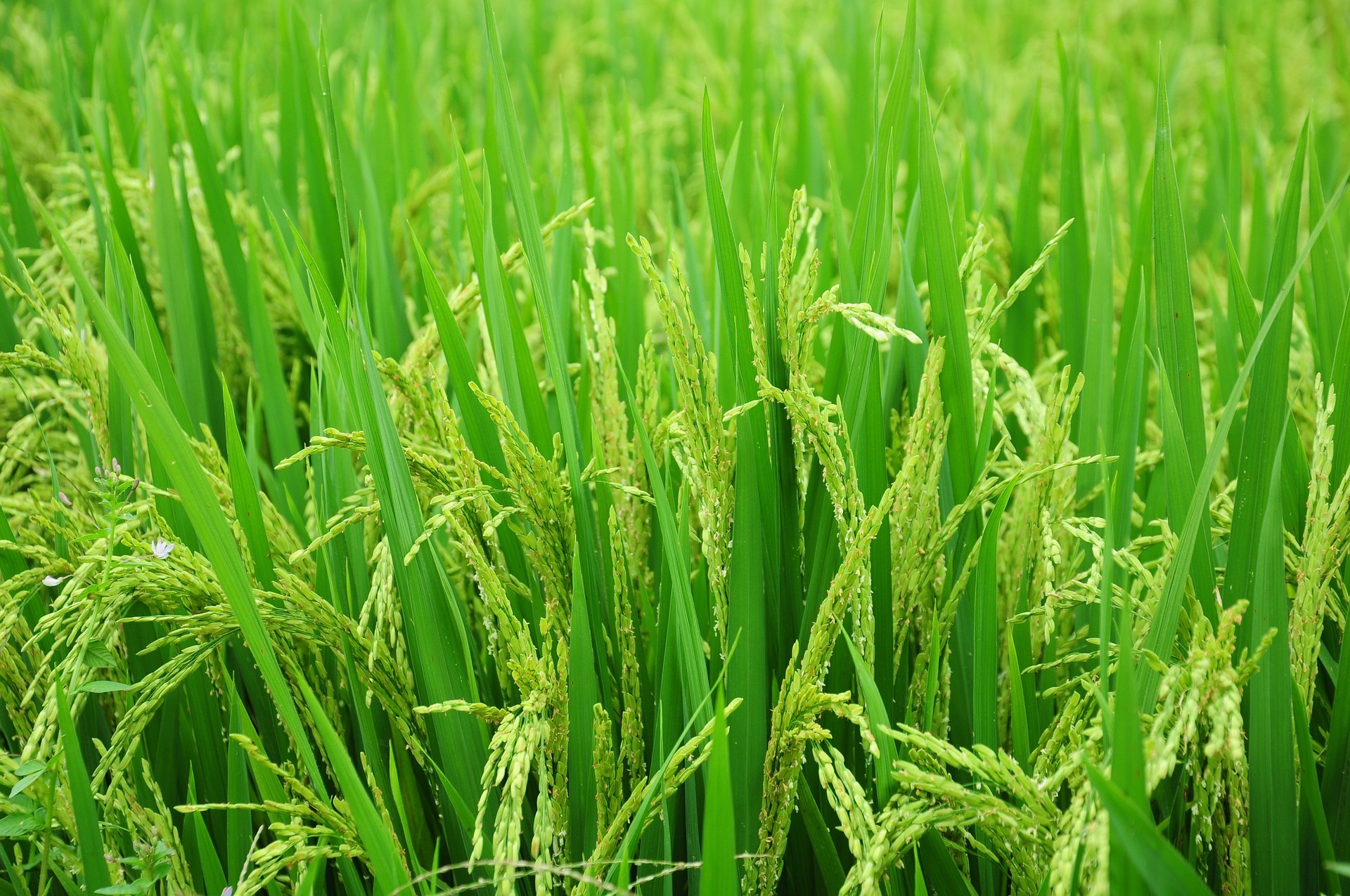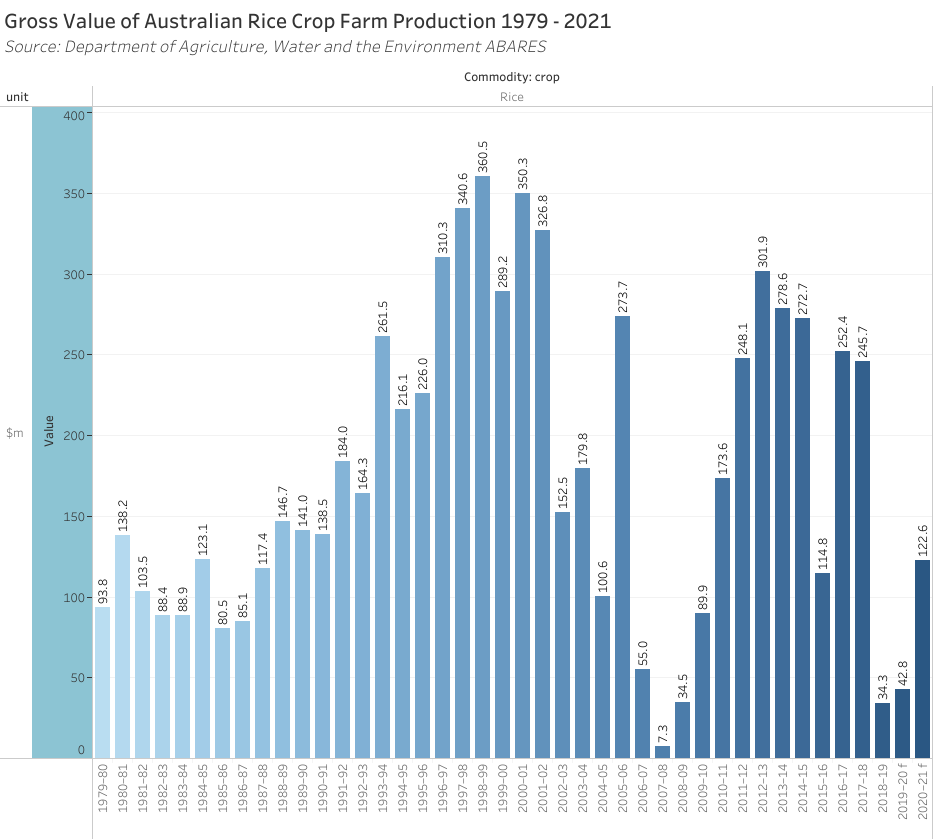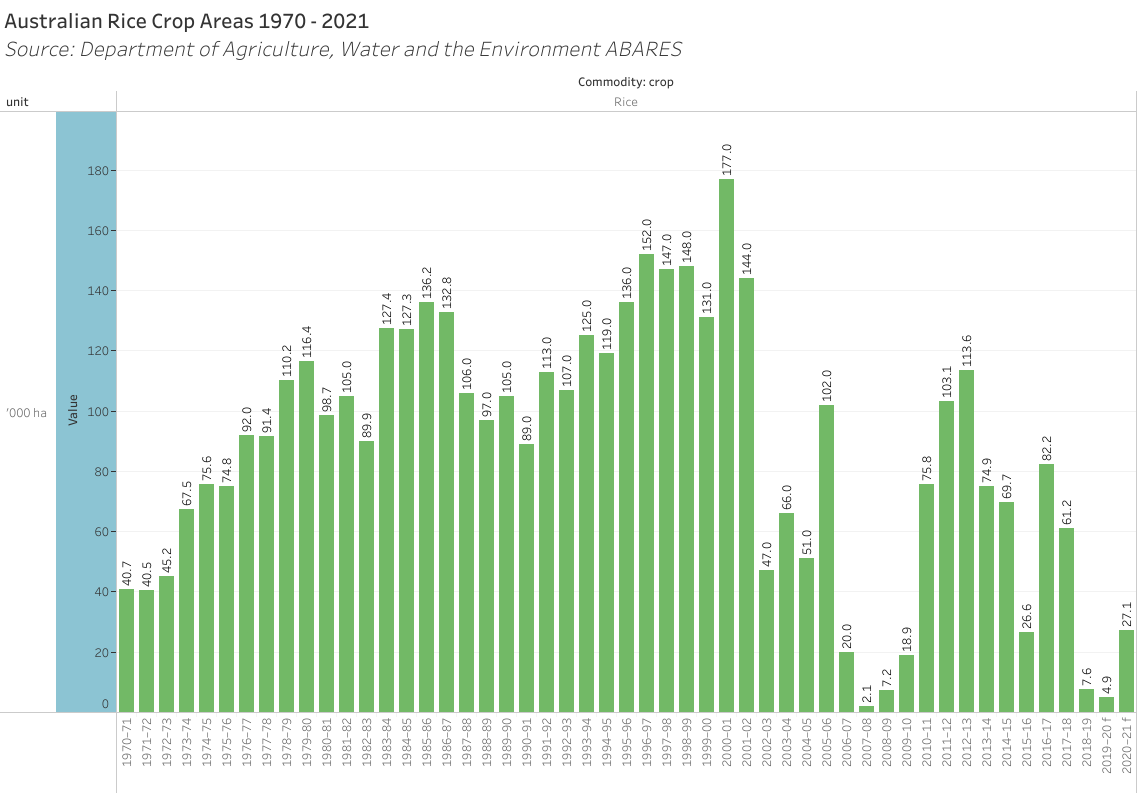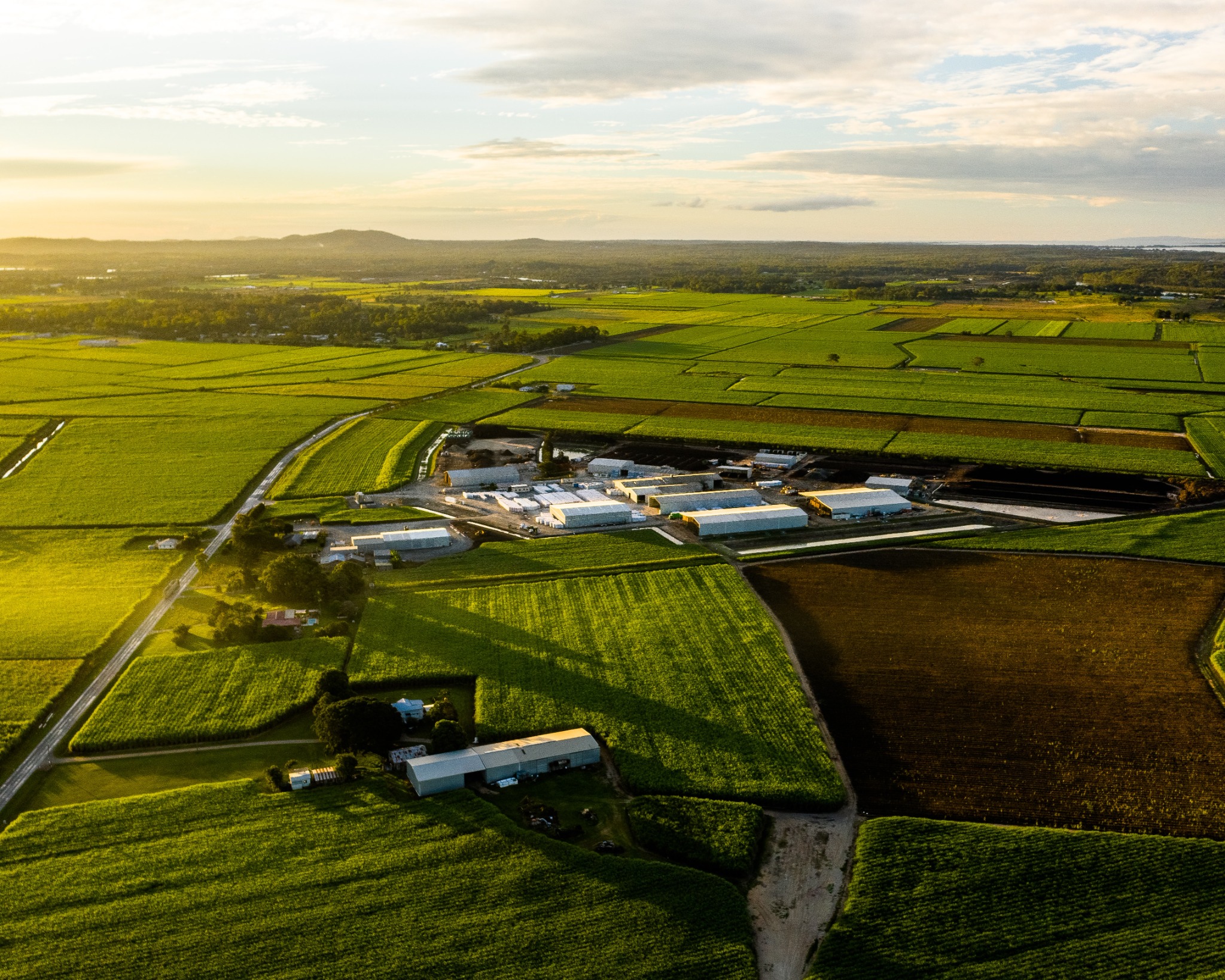Australia is at risk of running out of homegrown rice by early 2021

The Australian Bureau of Statistics (ABS) data shows the value of Australian rice crops dropped a staggering 86 per cent in 2018-19 forecasting a homegrown rice shortage.
The data revealed that the gross value of the Australian rice crop commodity was worth $34.3 million in 2018-19 down from the previous financial year of $246 million in 2017-18.

The Ricegrowers’ Association of Australia president Robert Massina said recent water reforms have impacted allocations both at a State and Federal level which has made it difficult to farm rice crops with the water they require to grow.
“I would say early 2021 the availability of Australian rice in packets on Australian supermarket shelves will be very, very minimal.”
“To put it into perspective in 2018, 17-18, our farming operation delivered over 2,000 tonnes of rice into SunRice and since that time we haven’t delivered one single kilo, so the main cause of that is obviously drought,” he said.
A statistical summary from The Rice Marketing Board for the State of NSW shows there were 1,186 rice farms producing 799,676 tonnes of rice in the 2017 crop compared to just 104 rice farms producing 46,175 tonnes in the 2020 crop.
“I have a property right to water of 1,000 megalitres and, in the last couple of years, particularly in our valley, we have had zero per cent, so we have had no ability to access that 1,000 litres of property right,” said Mr Massina.
“Last year…temporary water in the Murray got up to $700 per megalitre. Today I can buy temporary water for about $130 or $140 so there is a big difference…that is all based on supply and demand… you can’t go and grow rice at $700 a megalitre…because you won’t make any money whatsoever,” he said.
An analysis of the ABS data shows in 2018-19 drought conditions meant only 75,600 megalitres were used to irrigate rice crops, a 90 per cent water usage drop on Australian farms compared with the previous year.
The ABS data also revealed a record high 66 per cent increase in 2018-19 of extra temporary water purchased for Australian agricultural farm production, although volumes purchased were down.
“Over the last two years we’ve seen the second lowest and the third lowest crop ever …Australian, domestic consumption alone would take 250 to 300 thousand tonnes of…Australian rice and last year we produced 44,000 and the year before we produced 53,000 so SunRice itself has probably flexed its supply chains overseas,” said Mr Massina.
“We are just planning our rice crop now…it will be harvested in April 2021…so a fresh lot of Australian crop probably [won’t hit] supermarket shelves until the second half of 2021,” said Mr Massina.

“It all comes down to climate and the Riverina lends itself very well to a climate for growing rice. It has been well documented and regarded that 98 per cent of the rice growing in Australia is grown in the Riverina,” he said.
“SunRice has invested in a small mill at Brandon up in Queensland in the Burdekin and there is a small amount growing up there,” said Mr Massina.

Minister for Agriculture, Drought and Emergency Management David Littleproud said the Australian Government is investing $2 billion in water infrastructure to assist the agriculture industry to achieve their $100 billion growth target by 2030.
Mr Littleproud said the Government is spending $270 million on 11 initiatives to put communities at the centre of the Murray-Darling Basin plan.
“Water reform in this country in the last 10 years has made rice producers in Australia a high-cost producer so water has become the number one cost input, so the only way to fix that ultimately [is] to increase yield and decrease water use,” said Mr Massina.
“We have probably reached a target milestone of growing a tonne of rice per megalitre of water and our whole [Research and Development] focus is to be better than 1.5 tonne per megalitre of water,” he said.
Treasurer Josh Frydenberg and Minister for Resources, Water and Northern Australia Keith Pitt have announced a Productivity Commission inquiry into national water policy that will review the efficiency of Australia’s water use for production in rural communities as part of the National Water Initiative (NWI).
The Commission will assess the water reforms agreed in the NWI, an intergovernmental national blueprint for water reform that reviews the process of Australia’s water resources sector every three years.
The next National Water Initiative is due for completion in 2021.
Post a comment